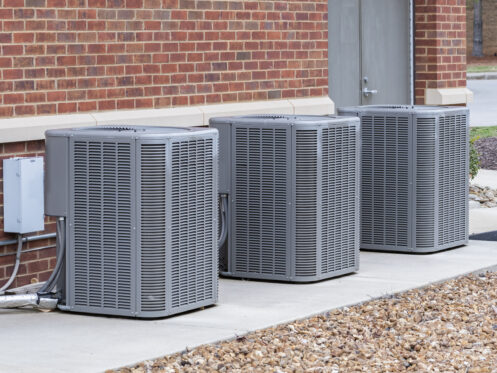If you’ve been looking for a new HVAC solution for your Omaha, NE, home or business, chances are you’ve come across ductless mini-split systems. These novel heating and cooling systems offer a multitude of benefits that other HVAC systems can’t match. However, most residents here aren’t terribly familiar with them since mini splits only recently started gaining popularity here. To remedy that, here’s everything you need to know about ductless mini-split systems, including their history, how they work, and the advantages they offer.
The History of the Ductless Mini-Split System
Although it may seem that ductless mini-split HVAC systems are a new innovation, they actually date back to 1959. That’s when the Japanese company Mitsubishi invented and put the first ductless mini-split HVAC system on the market. The new system type was tailor-made for conditions in Japan at the time. Back then, homes were small and built very close together, calling for an HVAC system that didn’t take up much space and didn’t make much noise. Those conditions made installing conventional central HVAC systems impossible.
To get around the space limitations, a ductless mini-split system typically uses an outdoor condenser unit that’s considerably smaller than the ones used by central HVAC systems. And instead of a single large air handler installed indoors, a ductless mini split includes one or more wall or ceiling-mounted air handlers installed in your home. That is how mini splits avoid the need for ductwork since each room gets an air handler capable of producing hot or cold air individually.
How Do Ductless Mini-Split Systems Work?
Ductless mini-split systems work just like any other kind of heat pump HVAC system. The main difference is their reliance on multiple air handlers. Instead of ductwork linking the system together, mini-split systems only require a bundle of refrigerant and power lines connecting their indoor and outdoor units. As a result, it’s fairly easy to install a mini split in any home. To do it, the installer places the condenser unit outside and mounts however many air handlers the home requires. All it takes is a small, roughly three-inch hole in each wall where an air handler gets installed to allow the necessary refrigerant and electrical lines to pass.
In the summer, a ductless mini-split system works like any other air conditioner. The primary difference is that mini splits allow you to set different temperatures for each indoor air handler. You can even turn off individual air handlers completely if you don’t need cooling in certain parts of your home. In the winter, however, a ductless mini split reverses its operation to harvest heat energy from the outdoor air and carry it inside to heat your home.
The Advantages of Ductless Mini-Split Systems
Ductless mini-split systems come with a variety of advantages that conventional HVAC systems can’t or don’t offer. These include:
High Energy Efficiency
Ductless mini splits can operate up to 40% more efficiently than comparable ducted HVAC systems. This is partially due to them not using ductwork, which can waste energy due to air leakage and conductive losses. Plus, mini-split systems use things like inverter technology and variable-speed fans to minimize energy use.
Zoned Heating and Cooling
Mini splits also offer zoned heating and cooling by default since each air handler has its own temperature controls. This improves the comfort of everyone in your home and gives you unprecedented control over the conditions in your home.
Quiet Operation
Ductless mini splits also tend to operate more quietly than central HVAC systems. Their outdoor units aren’t as large and make less noise, and the variable-speed fans in their air handlers typically operate at less-than-full speed most of the time.
Simplified Installation
With no ductwork to contend with, mini-split systems also offer simplified installation. They’re perfect for adding efficient heating and cooling to homes without preexisting ductwork. They’re also great for adding HVAC capacity to parts of your home that don’t have it, such as newly finished basements and additions.
They May Qualify for Rebates
Finally, mini-split systems that include heat pump technology may qualify for a whole host of tax credits and rebates. Due to their high energy efficiency, the federal government designed incentives to encourage homeowners to purchase ductless mini splits. Depending on which ones you qualify for, a ductless mini split could cost considerably less than a comparable conventional HVAC system.
Local Ductless Mini Split Experts
If a ductless mini-split system sounds like the perfect HVAC solution for your Omaha home or business, Xtreme Heating & Cooling LLC can help. Our team of expert HVAC technicians can install the right mini split for your needs so you can start enjoying its benefits right away. We also offer financing options on approved credit to help you fit a new ductless mini-split system into your budget. We’re also Better Business Bureau-certified with an A+ rating, so you can always count on the finest quality work and flawless customer service from us.
If you need a ductless mini-split system in Omaha, contact our experts at Xtreme Heating & Cooling LLC today! We offer comprehensive heating and cooling services.
